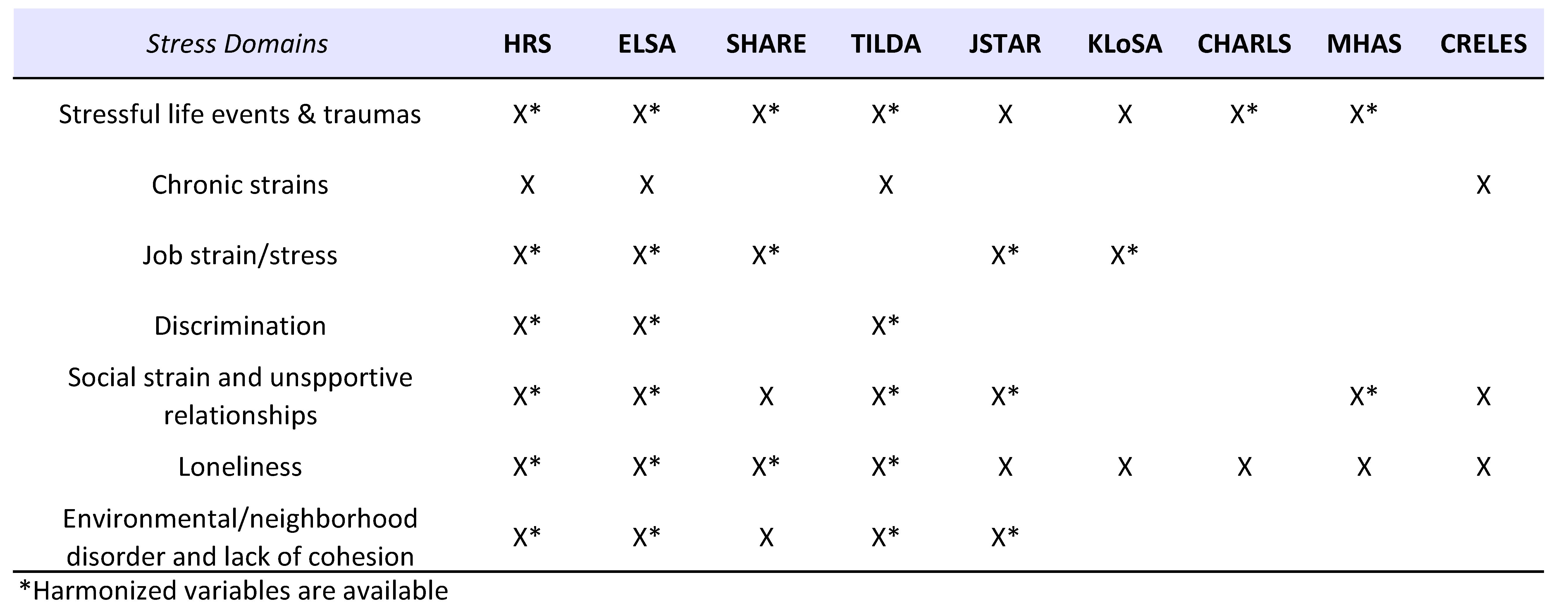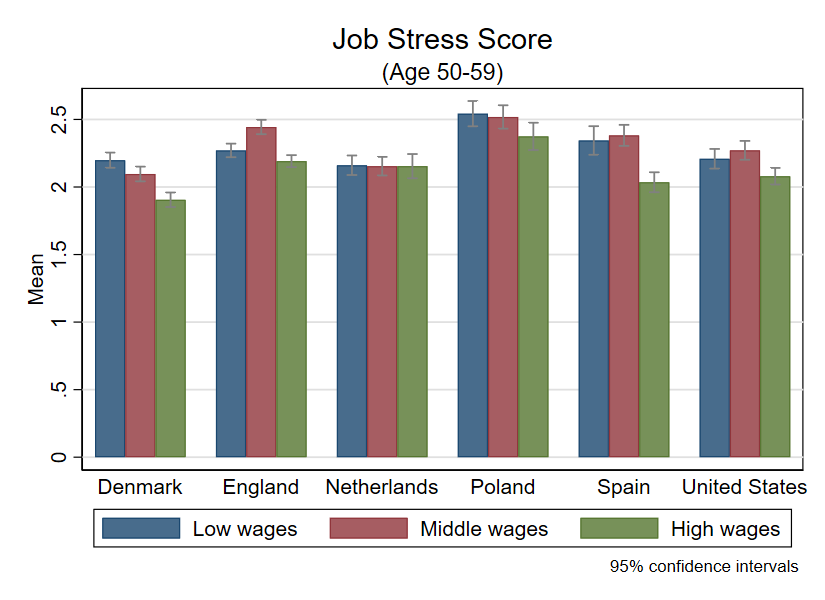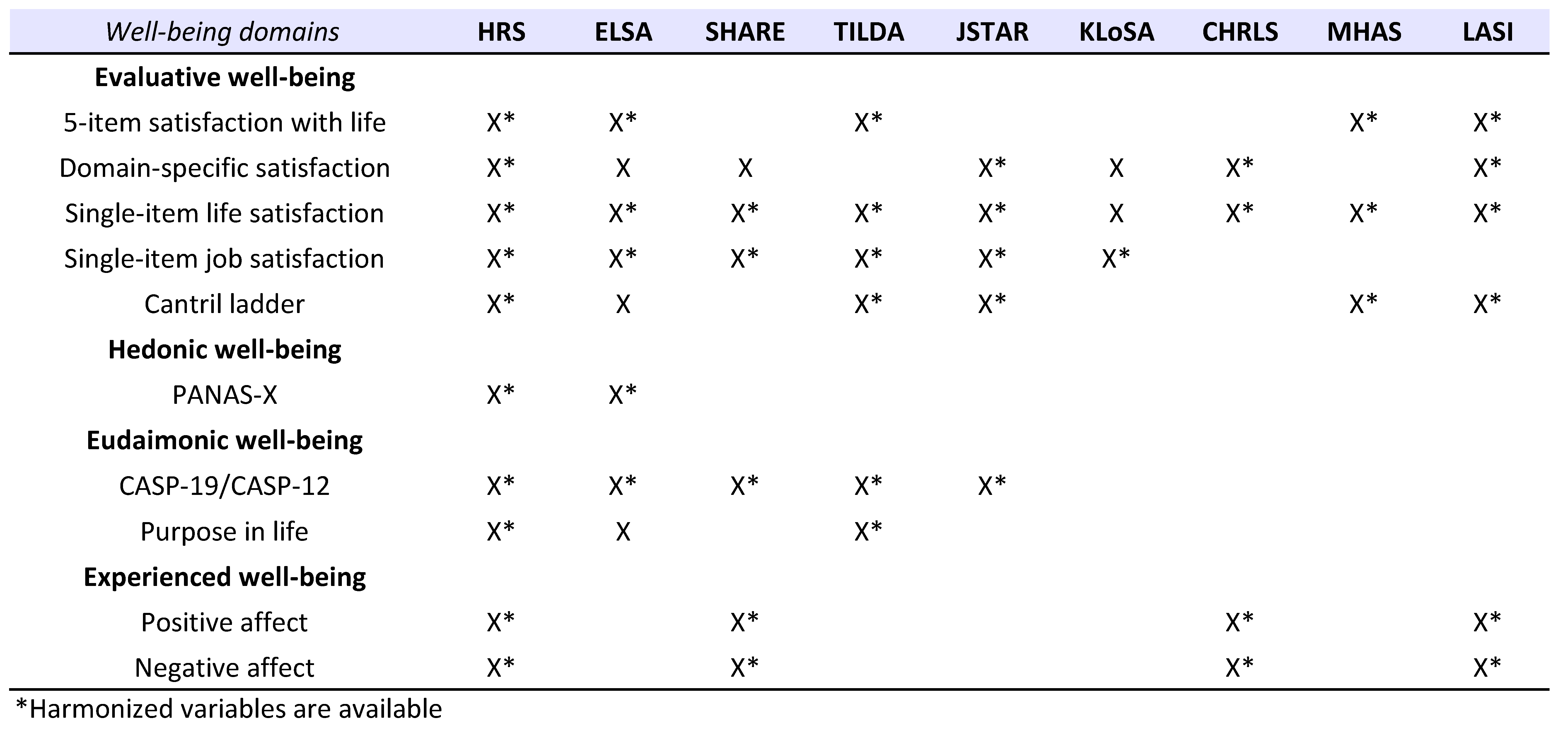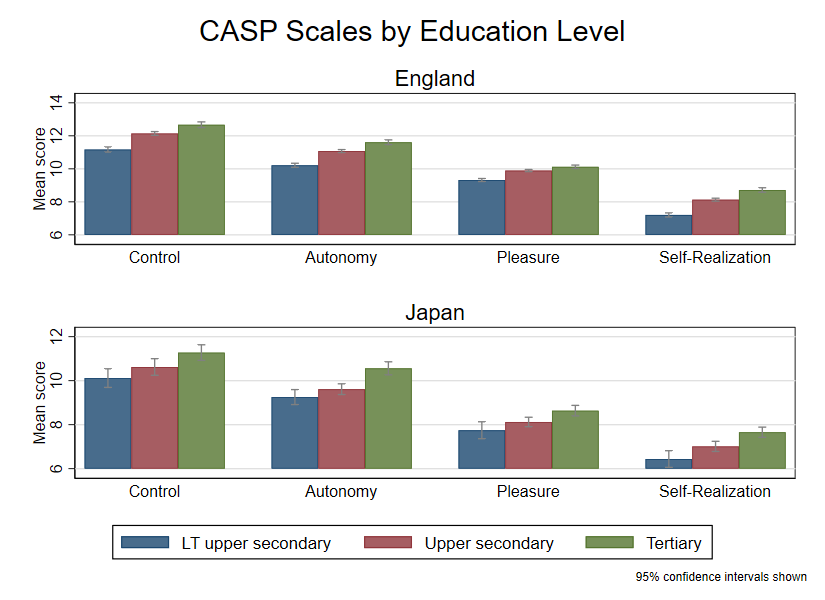Harmonized Stress And Well-being Measures
Written by: Alexandra Crosswell and Yoobin Park
Published on: Dec 12, 2022

In a collaboration with the NIH-funded Stress Measurement and Emotional Well-being Networks, the Gateway to Global Aging Data team has been working to identify and harmonize measures of psychosocial stress and well-being in the Health and Retirement Study (HRS) and numerous sibling studies. These studies are: English Longitudinal Study of Ageing (ELSA), the Survey of Health, Ageing and Retirement in Europe (SHARE), the Mexican Health and Aging Study (MHAS), the Costa Rican Longevity and Healthy Aging Study (CRELES), the Korean Longitudinal Study of Aging (KLoSA), the Japanese Study of Aging and Retirement (JSTAR), the Irish Longitudinal Study of Ageing (TILDA), the China Health and Retirement Longitudinal Study (CHARLS), and the Longitudinal Aging Study in India (LASI).
Stress Measurement Across Studies
Working with the Stress Measurement Network, the Gateway has developed a stress measures user guide which detail the stress questions included across HRS family of studies. The psychosocial stress variables that have been identified fit in to seven domains: (1) stressful life events and traumas, (2) chronic strains, (3) job strain, (4) discrimination experience, (5) social strain and unsupportive relationships, (6) loneliness, and (7) environmental or neighborhood disorder and lack of cohesion. The user guide describes the individual measures asked at each wave across all studies and discusses any cross-study or cross-wave differences. The expert authors determined which items and scales were similar enough to conduct cross-study analyses.

Research application: Harmonized stress measures allow the comparison of stress between individuals and/or over time. For example, the figure below illustrates average job stress scores across different levels of wages, compared across six countries in 2011/12. Harmonized job stress scores are based on 6-items of the Karasek demand-control measure of job strain where higher numbers indicate higher levels of job stress.

Well-being Measurement Across Studies
Working with the Emotional Well-being Network, the Gateway to Global Aging Data has developed a subjective well-being measures user guide which detail the well-being questions included across the HRS family of studies. The well-being variables were identified consistent with a broad conceptualization of emotional well-being (Park et al., in press): A multi-dimensional composite that encompasses how positive an individual feels generally and about life overall. It includes both experiential features (e.g., emotional quality of momentary and everyday experiences) and reflective features (e.g., judgments about life satisfaction, sense of meaning, and ability to pursue goals that can include and extend beyond the self). The variables were organized in four categories: (1) evaluative well-being (e.g., life satisfaction), (2) hedonic well-being (e.g., positive affect), (3) eudaimonic well-being (e.g., autonomy), and (4) experienced well-being (e.g., experienced positive affect previous day). As part of the user guide, the expert authors determined which items were comparable across studies.

Research application: Harmonized well-being measures allow the comparison of well-being between individuals and/or over time. For example, the figure below illustrates average scores of control, autonomy, self-realization, and pleasure (CASP) across different levels of education. CASP was assessed in both England and Japan in 2010/11. Higher values on each subscale indicate higher levels on the respective facet of well-being.

Getting started with the data
Harmonized stress variables have already been incorporated into the Harmonized HRS, MHAS, ELSA, SHARE, KLoSA, and CHARLS data. Links to download these data along with their Harmonized Codebooks are available from our Get Data page under the Harmonized Data tab. We also have hosted two webinar focused on stress variables, an introductory and an advanced webinar, to help users take advantage of these exciting new data to understand how psychosocial stress exposures and responses influence health and aging trajectories. Harmonized well-being variables are in the process of being added into each Harmonized dataset
This work was supported by the National Institute on Aging at the National Institutes of Health (R24AG048024, R01AG030153; U24AG072699). Stress Measurement and Emotional Well-being Networks recently received applications for research proposals involving analyses of harmonized measures of stress or emotional well-being (see details here), and will fund 4-5 proposals.
Reference
- Alexandra Crosswell is an Assistant Professor of Psychiatry at the University of California San Francisco.
- Yoobin Park is a post-doctoral fellow at the University of California San Francisco.